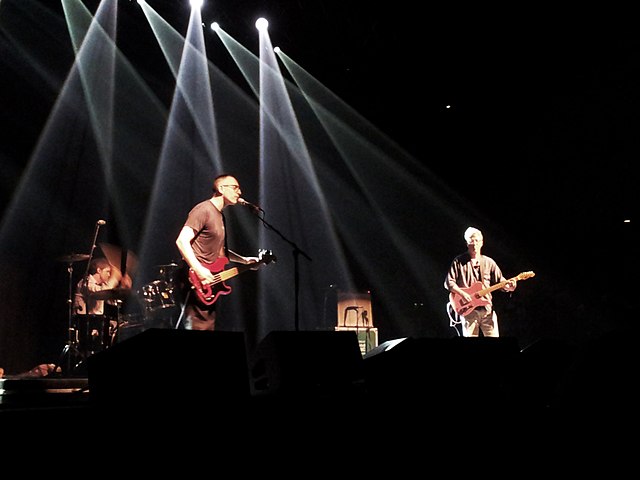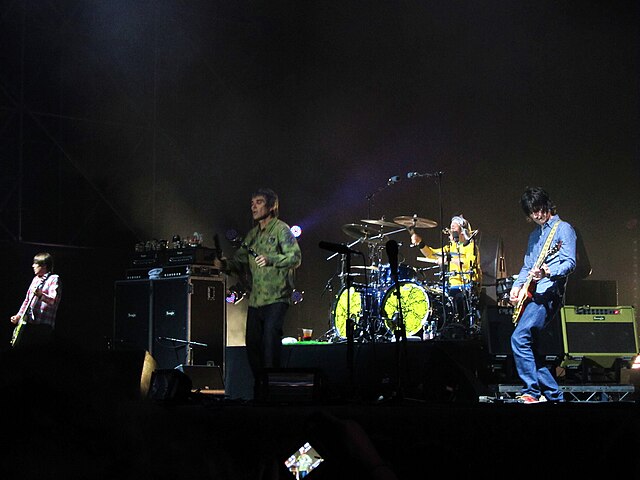Slowcore, also known as sadcore, is a subgenre of indie rock characterised by subdued tempos with typically minimalist instrumentation alongside solemn and melancholic lyrical performances.
Lana Del Rey, pictured in 2013, has self-described her music as "Hollywood sadcore".
American Music Club performing at Bush Hall in 2008. They are considered to be one of the earliest slowcore bands.
Codeine are considered to be one of the first slowcore bands. They are pictured here performing at Alexandra Palace during their 2012 reunion tour.
Low, pictured in 2013, are heralded as pioneers of slowcore with their early releases.
Indie rock is a subgenre of rock music that originated in the United Kingdom, United States and New Zealand in the early to mid-1980s. Although the term was originally used to describe rock music released through independent record labels, by the 1990s it became more widely associated with the music such bands produced.
The Chills performing at Indietracks in rural Derbyshire in 2014
British band The Jesus and Mary Chain performing in California in 2007
My Bloody Valentine pioneered the indie rock subgenre shoegaze
The Stone Roses' 1990 Spike Island concert was the highest attendance performance by an independent artist of its time








